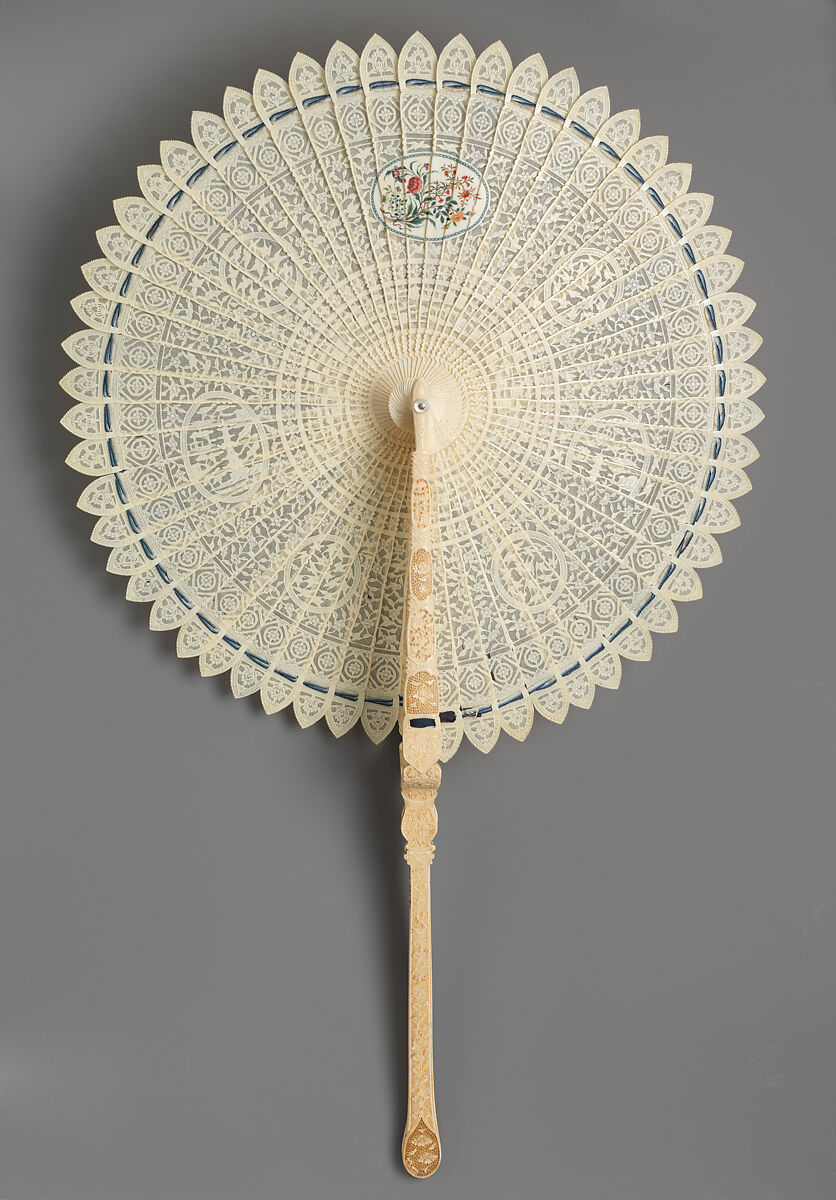Asian fans
- Cabinet Gauchet Art Asiatique
- Jan 20
- 3 min read
Much more than mere accessories, fans occupy a unique place in Asian history and culture. Their origins go back thousands of years, initially as utilitarian tools before becoming objects of art and status symbols.

The first fans, shaped like leaves or feathers attached to a handle, appeared in China during the Shang dynasty (1600-1046 BC). These rudimentary objects were mainly used to protect people from the sun or to fan the flames. Over time, their manufacture was perfected and their use diversified, becoming both practical and highly symbolic.
In China, fans were used not only for refreshment, but also as a medium for artistic creation. Rigid fans, called ‘shàn’, were often made of silk or feathers and decorated with hand-painted motifs. Later, folding fans, introduced from Japan during the Ming dynasty (1368-1644), became a genuine means of artistic expression. Chinese painters and calligraphers used their talent to transform these objects into veritable works of art. Nature scenes, poems and auspicious symbols adorned these fans, conferring a high status and a certain refinement on their owners. Fans in China were also associated with religious rituals or official functions, reflecting their cultural importance.

In Korea, fans were widely used by both the nobility and the working classes. Both fixed (‘danseon’) and folding (‘jeobseon’) fans were often made from local materials such as bamboo, silk and hanji paper. As well as their practical uses, they symbolised elegance and wisdom, and their design often reflected natural motifs or Confucian values. In shamanic rituals, fans played a spiritual role, being used to invoke spirits or ward off negative energies. Today, Korean fans remain an essential part of the country's cultural heritage.
Japan has also played a crucial role in the evolution of fans. Japanese folding fans, known as ‘sensu,’ are created from bamboo and paper or silk. Their invention dates back to the 7th century, and they were quickly adopted by the imperial court. Used in contexts as varied as traditional dances (such as ‘Noh’ and ‘Kabuki’) and ceremonies, these fans represent the harmony between functionality and aesthetics. Each fan had a unique meaning depending on its motifs and colours, often linked to the seasons, poems or spiritual references. Some fans were also used for military purposes, such as the ‘gunbai’ used by generals to direct their troops.

In Vietnam, the fan (‘quat’) also plays a key role in local culture. Used in everyday life as well as in the performing arts, it is both a practical tool and a cultural symbol. Made from natural materials such as bamboo, rattan and paper, the Vietnamese fan is often decorated with traditional motifs reflecting the country's landscapes, flora and fauna. Traditional Vietnamese dances, such as the fan dance, also illustrate its artistic role. During major festivities or ceremonies, the fan becomes a genuine means of expression, both graceful and meaningful.
Throughout Asia, fans have survived the ages as functional objects, but also as media for crafts and art. Their production involved complex skills, bringing together painters, sculptors and craftsmen. Some fans were even made to tell stories or convey political messages. Today, these antique fans are sought after by collectors the world over for their historical and artistic value. Museums and art galleries, both in Asia and internationally, devote exhibitions to these elegant objects, highlighting their refinement and symbolism.

If you own an antique or precious Asian fan, Gauchet Art Asiatique can help you appraise and value it. With its experience and in-depth knowledge of Asian art, our firm is at your disposal to authenticate and assess the value of your works. Contact us for personalised assistance. Whether it's a historic fan or a rare piece, we can help you discover the full value of your heritage.
References :
Les précieux éventails d’Hiroshige exposés au musée Guimet, Inès Boittiaux, Beaux Arts Magazine, [en ligne], https://www.beauxarts.com/expos/les-precieux-eventailsdhiroshigeexposesaumuseeguimet/#:~:text=Le%20mus%C3%A9e%20Guimet%20pr%C3%A9sente%20pour,la%20plupart%20aujourd'hui%20disparu.
Traditional fans do more than just help cool off during summer, Minnath Azeez, Korea.net, [en ligne], https://www.korea.net/NewsFocus/HonoraryReporters/view?articleId=200329
Un monde dans la manche, Peintures sur éventail des Ming (1368-1644), Musée Cernuschi, [en ligne], https://www.cernuschi.paris.fr/fr/expositions/un-monde-dans-la-manche-peintures-sur-eventail-des-ming-1368-1644
Comments